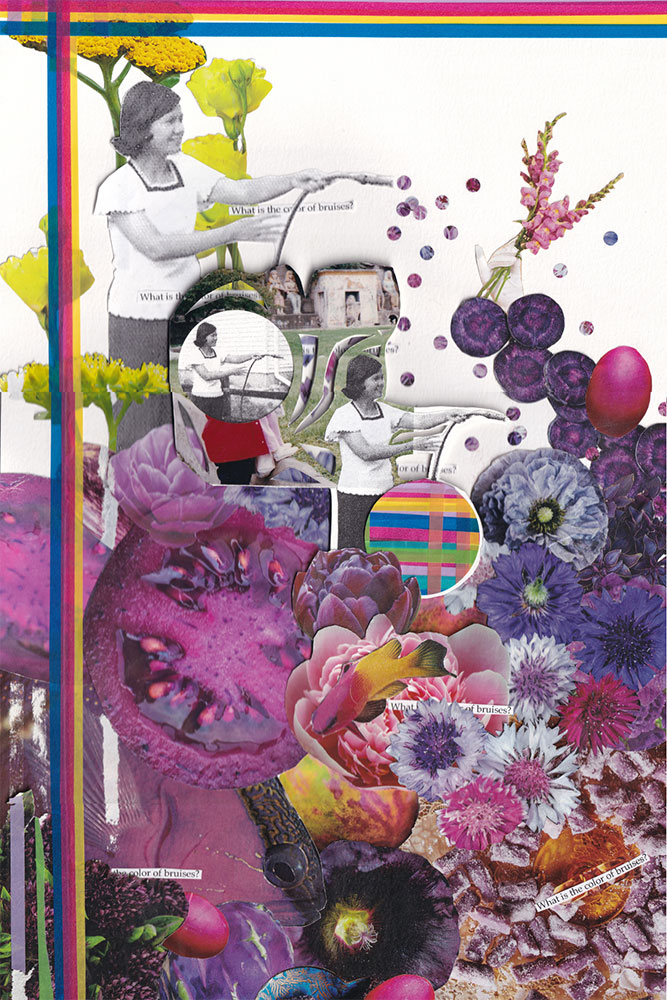Artist Statement
As an artist, I have always been invested in engaging with ancestry. Another way of saying: my art is a way I connect with my beloved dead, with the ancestors of whom I have no records, with my future ancestors I am not sure, but I hope, will exist.
Back in February, around the time I began to adopt collage into my creative work and (scarily!) begin to call myself a visual artist as well as writer and poet, I taught a class through the Asian American Writers’ Workshop entitled, “A Collage of Understories,” which aimed to honor erased histories and ghosts, engaging with personal and historical archives as a gateway to contact. The class hoped to find answers toward the questions, “How do we honor what we don’t know, what we might not ever know? How do we imagine a better world?” So, when I read about Seventh Wave’s curated calls for submissions, Bianca Ng’s call “On Tending,” moved me deeply, especially these two questions: “If no one sees your change, how can you continue to honor your growth?” and “How do you honor your decay?”
Collage, like poetry, is a series of choices; it is a gathering process. Both poetry and collage can feel transformative, alchemical. In collage, as in poetry, using scale, juxtaposition, and layers (creating and uncovering them), one can re(dis)cover latent narrative, create new meanings and associations, and communicate multiple truths; both mediums are ripe for reimagining, for collapsing time and space and the various veils between us. When I answered this call, I submitted poems and the nascent makings of collage work hoping to tend to the decay in/of wounds that keep me from loving all of myself as well as wounds of loss. I submitted poems that speak to future ancestors, hoping “we’ll inhale/imagined futures/together” and poems that “apply a question of love” to the reality of my own miscarriage and the fact that “there might not ever be a baby.” In conversation with Bianca’s thoughtful feedback, I created collages using imagery from fashion magazines my cousin brought back for me from the Philippines alongside images from the archive of US colonization of the Philippines as well images of my mother and myself from my personal archive; I also used images from seed catalogs. During the process of working with Bianca and creating work for this call, the world has watched and continues to watch genocide sanctioned by the US machine of war and empire carried out in real-time by the Israeli government against Palestinian people. In bearing witness, in protest, in rage, in heartbreak, in solidarity, I humbly offer what I have made with as much tenderness as we can make for ourselves in the face of dehumanization; I offer what I have made as a part of what friend and fellow poet Janice Lobo Sapigao asserts about the work by Filipinx poets and writers for a Free Palestine, which “will tell you that the ghosts of the people that occupation, war, and colonialism kills don’t die. They live and they fight and they write.” I offer, “My mother’s roses—peach, yellow, lavender—a blooming perpetual, bordering a house, bordered by suburbia, bordered by hedges and fences and fear, bordered by history, bordered by continental flight, bordered by archipelago, bordered by hunger, bordered by so much need to survive.”












